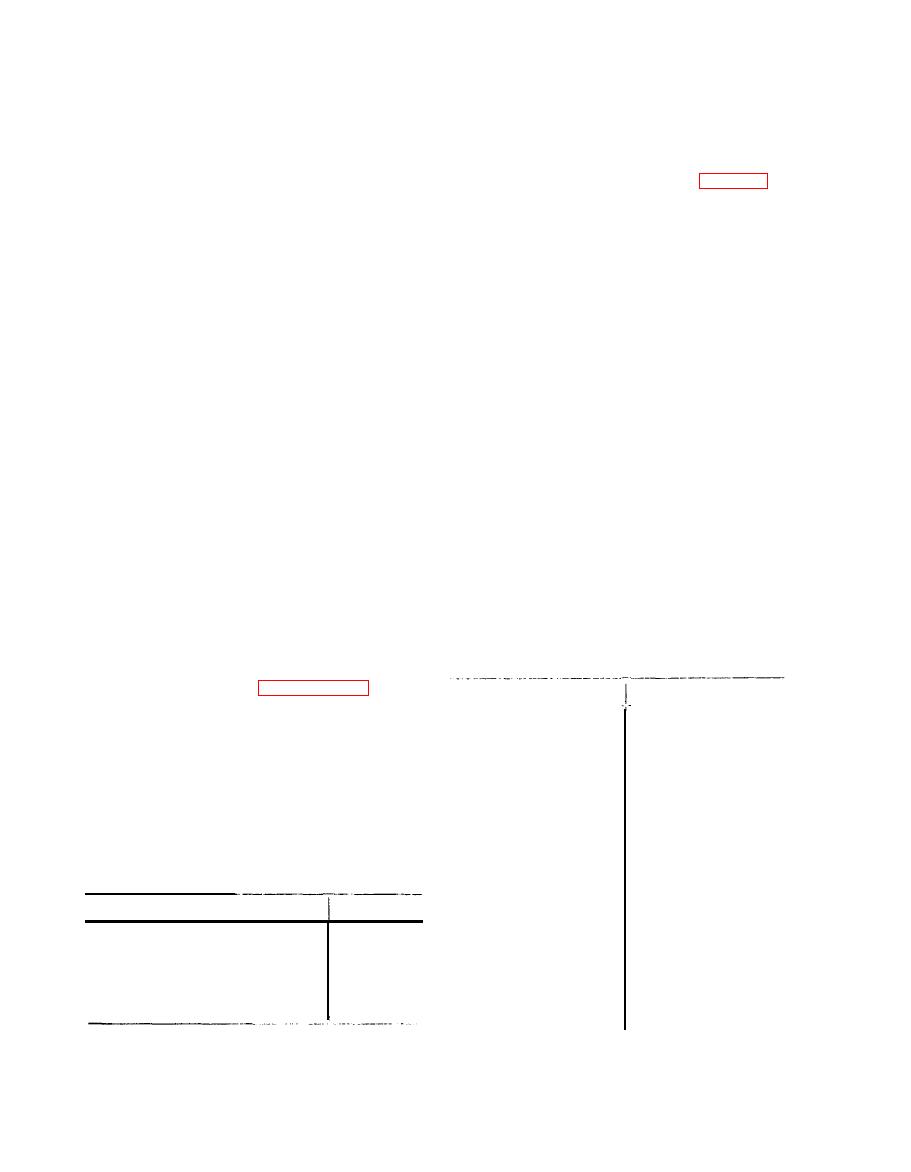
(d) Clean the upper motor bearing with a
thoroughly after using the solvent.
cloth dampened in solvent (SD).
Carefully clean the interior with a
(e) Clean the lower bearing with a solvent.
lint-free cloth and a clean, dry, soft-
(3) Lubrication. Lubricate the bearings in
bristle brush. Remove the accumu-
accordance with the chart (par. 135).
lated dirt, carbon dust, and grease from
Before reassembling the motor, coat the
the coils and high-voltage terminals.
bearing with a light film of grease.
Be careful to clean the portions under
Between cleaning periods, lubricate by
the terminals. Clean the upper end
bell.
applying 1 or 2 drops of oil to the top
bearing without disassembling the motor.
(b) Clean the commutator with a clean, dry
The amount of oil and the frequency of
cloth. If necessary, the commutator
application will depend largely on operat-
can be polished with a piece of crocus
ing conditions. Be careful not to over-
cloth or rubber eraser. Do not use
lubricate, as excessive oiling will cause
emery cloth. Remove dirt, grease, and
gum to form on the commutator.
metallic particles from the spaces be-
(4) Reassembly. Reassemble the motor by
tween the segments of the commuta-
reversing the disassembly procedure.
tor. If the surface of the commutator
Check for proper alinement with the lead
is dark, smooth, and highly polished,
screw.
and the commutation is satisfactory,
b. Motors in Facsimile Sets AN/TXC-1B, AN/
the commutator surface should be left
TXC-1, and AN/TXC-1D. Instructions for the
alone. This condition should not be
brushless motors in Facsimile Sets AN/TXC-1B,
mistaken for a burned condition.
AN/TXC-1C, and AN/TXC-1D are similar to
(c) Clean the brushes with a clean, lint-free
those above, with the exception that instructions
concerning brushes and commutator do not apply.
cloth.
Section VI. FINAL TESTING
140. General
142. Tests
This section is intended as a guide to be used in
Make the following tests
a. Transmitting.
determining the quality of a repaired Facsimile
with the transceiver operating as a transmitter:
Transceiver AN/TXC-1(*). The minimum test
requirements outlined in paragraph 142 may be
Requirement
Test
performed by maintenance personnel with ade-
quate test equipment and the necessary skills.
Maximum deviation from
1. Fork frequency:
Repaired equipment meeting these requirements
standard, 1 cycle in 2
TRANSMIT position.
will furnish uniformly satisfactory operation.
minutes.
DB METER at 0.
Minimum wedge of 20 db
2. Contrast:
for both positive and
TRANSMIT position.
negative settings.
Final Testing
Maximum deviation of 1
3. Voltage regulation:
The items of test equipment required for the
db on meter while vary-
TRANSMIT position.
final testing of the facsimile transceiver are listed
ing power-line voltage
Balance on black, and
below. The manuals associated with each item
between 100 volts and
shine light on white.
130 volts ac, at the rate
DB METER at 0 with
also are listed.
of about 1 cycle per
light shining on white.
second.
Test equipment
Technical manual
Voltage measured across
4. LINK JACK output into
600-ohm load resistor:
Electronic Multimeter ME-6A/U --------
TM 11-5549
600-ohm load:
maximum, 17 volts ac;
TRANSMIT position.
Radio Receiver R-388/URR -------------
TM 11-854
minimum, 14 volts ac.
Multimeter TS-352/U -------------
TM 11-5527
DB METER at +2db.
Voltage measured across
Test Set TS-140/PCM -----------------
5. LINE binding post output
600-ohm load resistor:
Signal Generator SG-15/PCM ----------
TM 11-2096
into 600-ohm load:
maximum, .85 volt ac;
Decibel Meter ME-22/PCM -----------
TRANSMIT position.
minimum, .7 volt ac.
DB METER at +2db.


